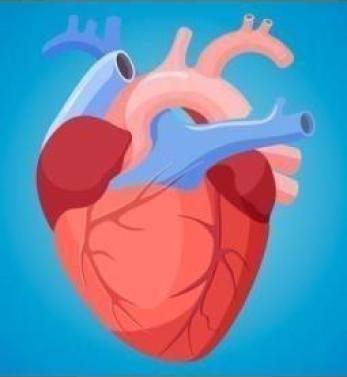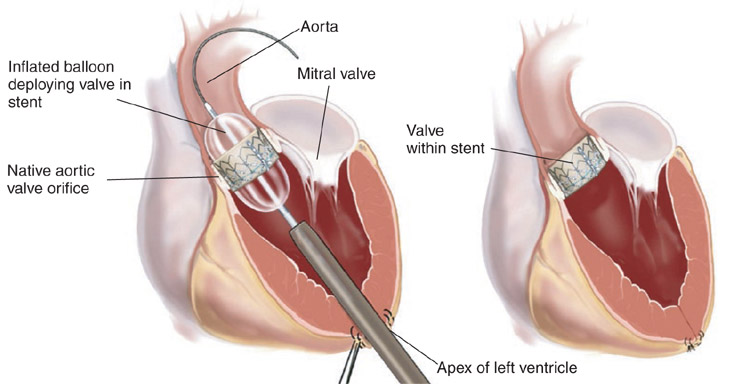

The aortic valve is the heart valve located between the left ventricle (left ventricle) that pumps blood to the body and the main artery (aorta) that leaves the heart. As people age, the narrowing of this valve due to deterioration and calcification is called aortic stenosis. Aortic valve stenosis may also develop at earlier ages due to rheumatic fever in childhood or structural defects of the congenital valve. In severe aortic stenosis, the amount of blood thrown into the main artery decreases significantly, and accordingly, chest pain, fainting and shortness of breath can be seen in the patient. The average life expectancy after the onset of these symptoms is less than 3 years.
The treatment of aortic valve stenosis is to replace or repair the valve with heart surgery. However, in patients who cannot undergo cardiac surgery, the valve may need to be expanded with a balloon. The benefits of this repair last about 6-12 months. This procedure is performed only to relieve the patient's problems arising from the narrowness of the valve. It is not a long-term treatment that eliminates the disease. This procedure is performed on patients only if they are not "suitable patients" for heart valve surgery.

What are the points to be considered before the procedure?
It is necessary to fast from the night before the procedure (you can take your medicines with a small amount of water). The area to be operated on, especially both groins, should be shaved. Female patients should not have any suspicion of pregnancy.
How to expand the aortic valve with a balloon?
The patient's groin is cleaned with antiseptic liquids. A local anesthetic is injected into the groin area to numb that area. After the numbness is achieved, the artery passing through the inguinal region is entered with the needle. With a special technique, a plastic pipe system is placed where the needle enters, which will remain throughout the procedure and be removed at the end of the procedure, through which the balloon can be advanced. A long guide wire is advanced along the vessel toward the heart until it reaches the valve. The doctor uses a device (scopy) that uses x-rays to see the wire. After the wire is placed in the right place, the balloon is advanced over the wire and placed inside the narrowed cap and inflated. Thus, the cover is expanded as much as possible. The balloon can be inflated several times. At the end of the procedure, the guide wire and balloon are removed. The plastic pipe system placed in the groin is also removed after a while and a sandbag is placed on the area where the intervention is made by pressing for a while.
Can balloon dilation of the aortic valve lead to undesirable events, what is the risk of the procedure?
The risk of this procedure depends on the heart's pumping power, general health, and how healthy other organs are. The risk of death and disability in this procedure is higher than other diagnostic and therapeutic methods used in the field of cardiology. The development of a heart attack, ruptures in the aortic valve / vessel or left ventricle can be seen in 2%. The risk of developing a stroke due to the procedure is around 4%. The mortality rate due to the procedure varies between 2-10%.